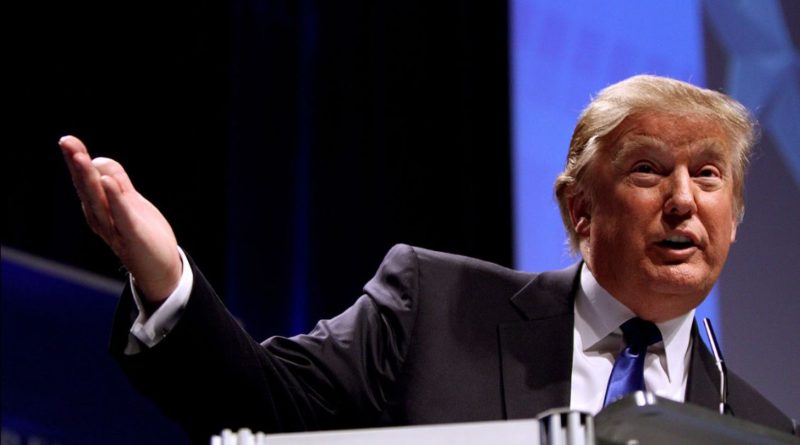Townley: Disruption is the new normal for the bicycle business so stay flexible!
Written by Jay Townley, Gluskin Townley Group
Recent events have made it apparent that trends in the American and global bicycle business have been affected by a series of unanticipated changes that make Now (within the next twelve-months) the furthest that reasonable projections or predictions can be made. The definition of Near-Term (One to Five years out to 2022) has to be recast to mean One to Two years, or out to 2018 at the most.
What has become clear is that we are now in an era of disruption that will be driven by the UK leaving the EU over the next two years (mid-2017-mid-2018), President Trump’s first four-year term in office, (2017-2020) as well as the rise of populism and its impact on national elections and shifts in power among the U.S. trading partners around the world.
This is not to say that some disruption will not be beneficial to the American and global bicycle business, but a company’s and trade association’s ability to plan for the future will, in our view, be greatly restricted and the planning process will now require semi-annual analysis and renewal for the coming 24-months.
For the bigger players in the bicycle business the strategic and related plans already in place for the Mid-Range (Five to Ten years out to 2027), the Long-Range (Ten to Twenty years out to 2037) and the Far-Range (Twenty to Thirty years out to 2047) [1] are, in our opinion, up for grabs and made obsolete in whole or part by recent disruptions and those that will happen over the next nine-months and into the next year.
What disruptions am I referring to? Brexit came first and was a forewarning of what was to come in November 2016. Populist (or nationalist leaning) political movements put conservative parties in positions of power in the UK and America.
While the UK and America were quick to reconfirm their long-standing trade and treaty support for each
other, America’s top five trading partners based on trade in goods in 2016 were China, Canada, Mexico, Japan and Germany.
Trade relations with China, America’s largest trade partner and the biggest supplier of bicycles and related products to the U.S. gyrated as the new administration waited for its nominees for Ambassador to China and U.S. Trade Representative (USTR) to be confirmed by the Senate.
The nominee for Ambassador is a long time friend of China, but, on the other hand the nominee to become the next USTR is a long time critic of U.S. trade policy with China and when confirmed will join a China Hawk who is in charge of a new White House office of trade, and didn’t require Senate confirmation. The combination is already being seen as signaling a change at the least, and a possible disruption in U.S. China trade relations – but we still have to wait to see what the actual trade policy will be.
The Canadian Prime Minister has already visited the new President and there were pledges of mutual cooperation on many issues, but the key topic of trade has yet to be fully discussed along with the details concerning the fate of the North American Free Trade Agreement, keeping in mind that NAFTA includes America’s second and third largest trading partners.
Trade relations with Mexico, the U.S.’s third largest trading partner, worsened quickly because of a dispute over immigration and the building of a wall along the U.S. and Mexican boarder. Despite recent meetings in both countries the trade situation is still very much up in the air along with the future of the North American Free Trade Agreement.
Japan’s Prime Minister has also recently visited the new President and spent a weekend playing golf. Trade relations appear to be off to a good start with America’s fourth largest trading partner. The Japanese Prime Minister did make several references during his visit to the substantial investments made in U.S. manufacturing by Japanese companies. A recent report shows that the American made automobile with the highest “made in the U.S.A.” content is made by a U.S. Toyota manufacturing plant.
 Germany’s Chancellor representing America’s fifth largest trading partner is scheduled to visit President Trump March 14 amid an election campaign that has seen the emergence of conservative and nationalist parties challenging the ruling Christian Democrats and forcing the Chancellor to take a harder line on a number of issues including immigration. German companies have also made large investments in the U.S. and the largest BMW automobile manufacturing plant in the world is located in the state of South Carolina. It exports 70-percent of its annual production.
Germany’s Chancellor representing America’s fifth largest trading partner is scheduled to visit President Trump March 14 amid an election campaign that has seen the emergence of conservative and nationalist parties challenging the ruling Christian Democrats and forcing the Chancellor to take a harder line on a number of issues including immigration. German companies have also made large investments in the U.S. and the largest BMW automobile manufacturing plant in the world is located in the state of South Carolina. It exports 70-percent of its annual production.
As has been widely reported, America’s largest trading partner, China was roundly criticized during the U.S. election campaign and at least two of the new trade negotiators that are about to come online are China Hawks which indicates potential changes if not out-right disruption in trade relations with the number one source of bicycles for the U.S. market.
Of the two partners in the much criticized North American Free Trade Agreement one, Mexico is already embroiled in a dispute that has spilled over into the trade arena.
The situation relative to Japan appears to be stable for the moment and the situation relative to Germany has yet to play out, but both countries would certainly become active opponents of any border adjustment tax that may emerge from U.S. income tax reform during the coming weeks and months.
Budget proposals incoming
We have been told to expect a Budget Proposal from the Trump Administration on or about March 16th which will reportedly cut back numerous government programs and expedite an historic contraction of the federal workforce.
President Trump said as recently as February 28 in an interview with Fox News that hundreds of unfilled jobs in his administration were “unnecessary to have.”
If this is the intention of the new administration it will be apparent in the detail of the Budget Proposal. There are political scientists that believe simply leaving federal jobs vacant may not be the best way to accomplish what presidential adviser Stephen Bannon has referred to as “deconstructing the administrative state.” What Bannon means by this phrase is not clear.
But Joseph Postell, assistant professor of political science at the University of Colorado, Colorado Springs says dismantling the administrative state will require acts of Congress and won’t be achieved simply by leaving important government posts unfilled.
Over 1,000 political positions require Senate confirmation, and so far President Trump has nominated just a handful. As an example, at this writing none of the deputy secretaries or undersecretaries at the Department of State have been named.
 The Trump Administration has also not yet to name a FEMA director or TSA administrator. Other high level posts at the Treasury, the Department of Justice and Department of Health and Human Services are likewise filled by acting heads, or remain vacant.
The Trump Administration has also not yet to name a FEMA director or TSA administrator. Other high level posts at the Treasury, the Department of Justice and Department of Health and Human Services are likewise filled by acting heads, or remain vacant.
Paul Light, professor of public service at NYU observes that many agency heads are in place, but “you’re missing all those positions between the Cabinet secretaries, and the sort of day-to-day work of government. The result, Light says: “government is basically frozen.”
This may be what President Trump wants, but it also represents a disruption that could have a series of negative impacts on the bicycle business if, as an example, customs specialists are not available to offer advice or to rule on what duty rates should apply to bicycles and related parts and accessories items entering U.S. ports.
Tax reform: As we have already covered in detail in this publication, the new administration hasn’t yet published its tax reform proposal. Like-wise, a tax reform proposal from the Senate has not yet emerged – but what has been advanced is a detailed tax reform proposal from the House of Representatives called the “Better Way” tax reform plan.
Proposed by House Speaker Paul Ryan and Ways and Means Committee Chairman Kevin Brady the House tax reform plan would move the federal tax system toward a consumption tax, which is in many respects similar to the European value added tax (VAT).
While the American bicycle business will undoubtedly benefit from a reduction in the income tax rate on businesses and individuals, the “Better Way” tax reform plan does contain a potentially disruptive boarder adjustment tax provision that has the potential to increase the cost and accordingly the retail prices of all imported bicycles by an estimated 15-percent.
Since approximately 98-percent of all bicycles sold in the U.S. are imported the disruption of such a tax reform provision would be particularly impactful to every aspect of the American bicycle business. The good news is a border adjustment tax hasn’t attracted support beyond Speaker Ryan and Chairman Brady.
As we said at the onset the events since Brexit have been consistent with White House Senior Advisor, Stephen Bannon’s prediction that a new populism will disrupt politics across the West. With this said the Scottish government has notified the UK government that it will seek another referendum on Scottish independence specifically as the result of Brexit.
Not necessarily a bad thing: Despite these and the other looming disruptions this unprecedented level of change in the U.S. and the world around us isn’t necessarily a bad thing for the bicycle business. Since the November election the Dow, S&P, NASDAQ and Russell have all set record highs and have increased 10-percent, unemployment is at 4.7 percent and consumer confidence increased in February and remains at a 15-year high according to the Conference Board!
The American bicycle business will have ample opportunity to make gains in this time of change and disruption, and what we are advising is adopting a new flexible business planning methodology that assumes nothing will remain the same and that everything will constantly change so business planning will have to be continually renewed and consumer research will need to be ongoing.
[1] The Five Time “Zones” we use were taken from the Six General Time Zones used by Amy Webb in her book The Signals Are Talking. We have not adopted the Distant Time Zone because it covers more than Thirty years and goes out to 2057 as being beyond the planning envelops of the majority of the companies in the global bicycle business.



